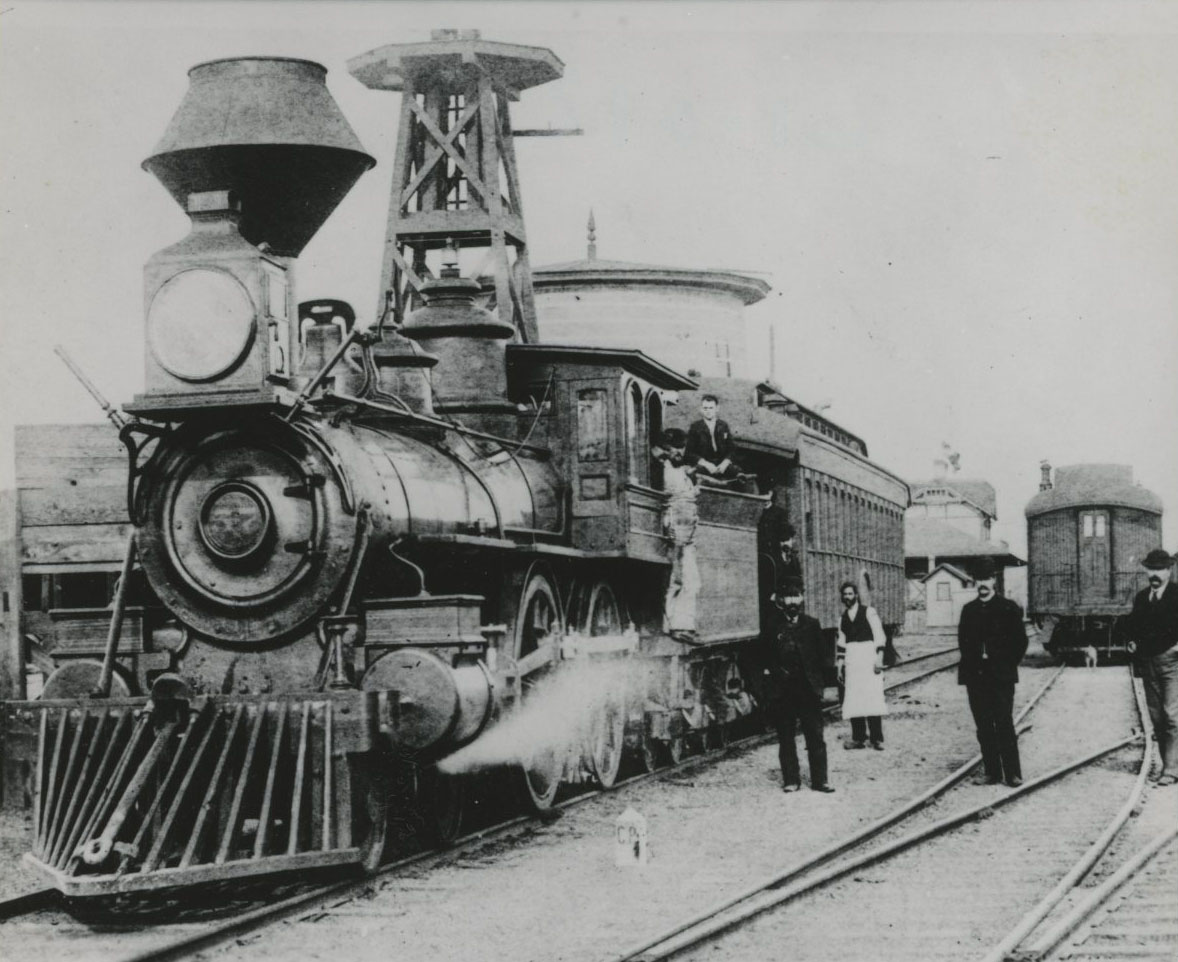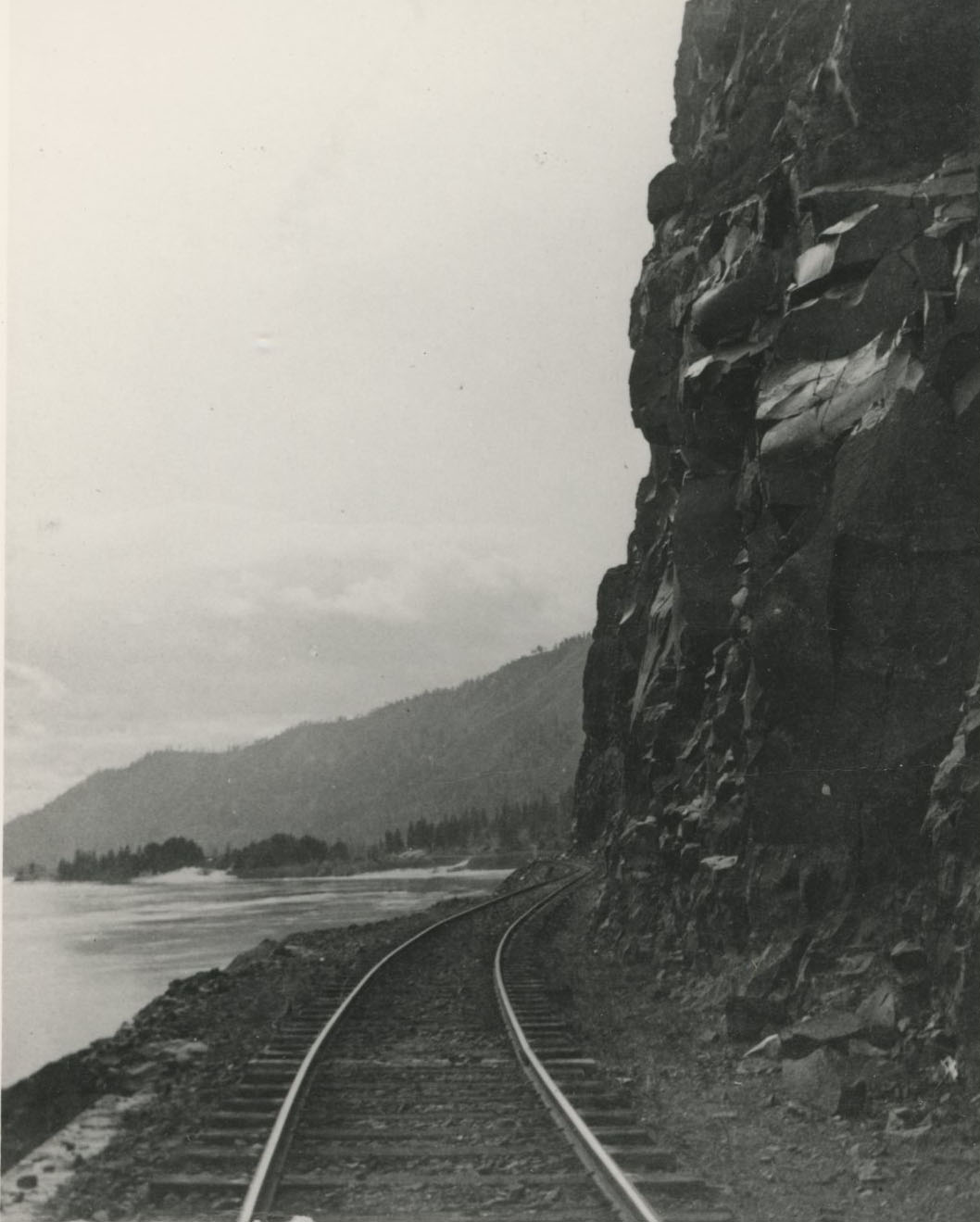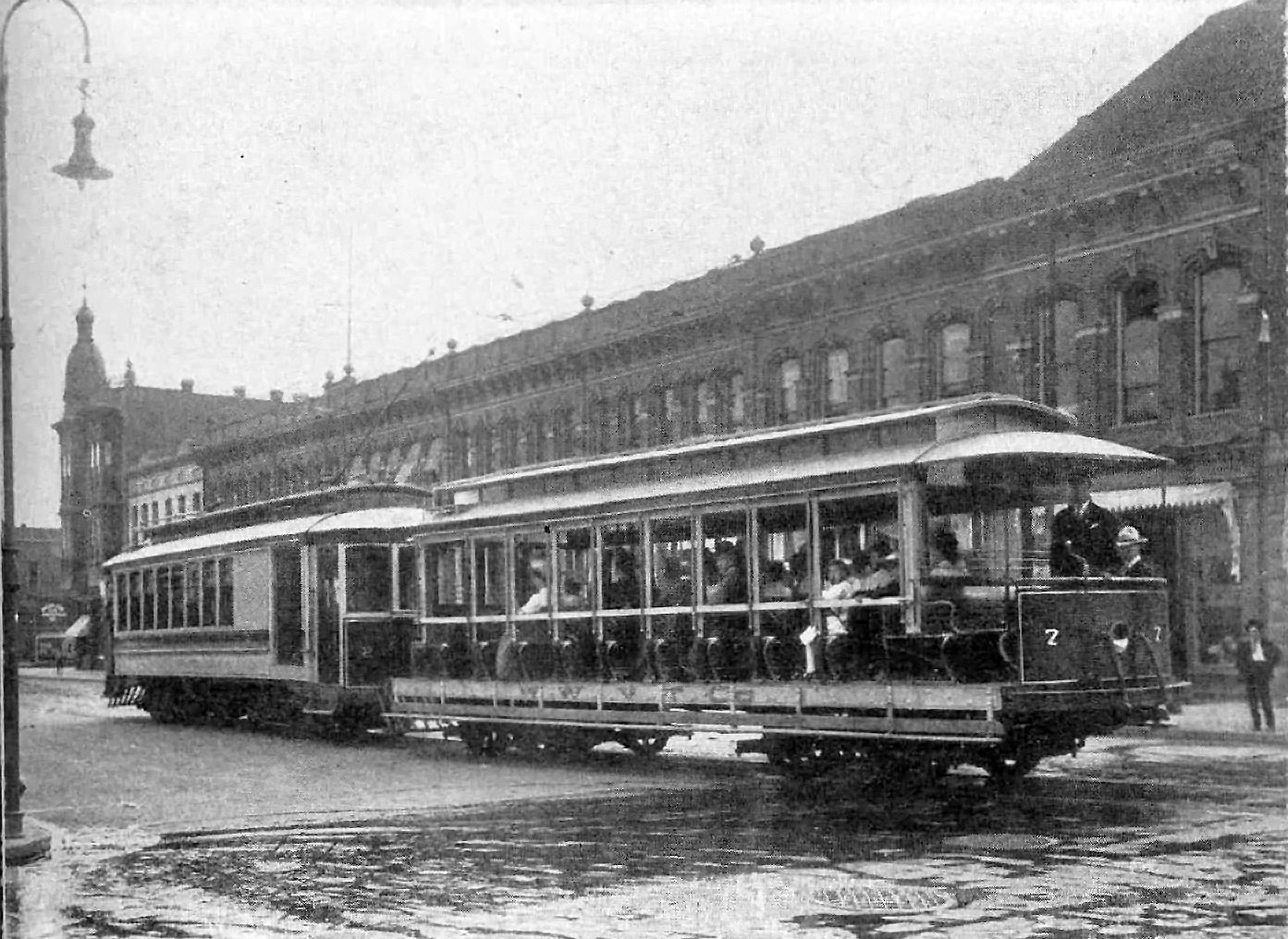Recognizing the opportunity to monopolize access to Oregon by the transcontinental railroads as well as maintaining a near-monopoly on regional waterways, financier Henry Villard incorporated the Oregon Railway & Navigation Company (OR&N) on June 13, 1879. By the time the company declared bankruptcy in 1894 during a national economic depression, the OR&N controlled the transcontinental railway to Portland and lines in nearly every part of the state. Its river business extended from the mouth of the Columbia to Eugene on the Willamette and to Lewiston, Idaho, on the Snake, plus access to Puget Sound. The company also operated the Pacific Coast Steamship Company, with steamship service between Portland and San Francisco.
The OR&N’s predecessor, the Oregon Steam Navigation Company (OSN), enjoyed a virtual monopoly that controlled the operation of nearly all the steamboats on the Columbia, Willamette, and Snake Rivers, as well as the portage railroads that bypassed falls on the Columbia at the Cascades and The Dalles. Control of the OSN resided predominantly with directors who represented business interests in Portland. Majority ownership shifted, however, when the OSN sought to increase its capitalization and financier Jay Cooke acquired seventy-five percent of the OSN for the Northern Pacific Railroad in 1868.
The Northern Pacific, in turn, pledged its OSN stock against loans provided by Cooke & Company. The failure of Cooke’s firm in September 1873, however, made NP’s stock in the OSN available, at which time German investor Villard, who had already wrested control of the Oregon & California Railroad from Ben Holladay, stepped in and acquired majority ownership in the OSN in 1879.
Villard secured his control of the region’s transportation network be creating the Oregon Railway & Navigation Company. He sought an agreement with the Northern Pacific not to build a railroad line on the north bank of the Columbia but instead to use his partially completed railroad link to Portland on the south side of the river. An agreement to that effect was reached on October 20, 1880.
Less than a month later, when NP obtained a much-needed $10 million first mortgage bond issue, Villard realized that the agreement granting NP access to Portland over OR&N rails was in jeopardy. He believed his only recourse was to acquire a controlling interest in the Northern Pacific. Villard’s earlier success in obtaining control of the Oregon & California Railroad provided him with superlative bona fides with German investors, sufficient to enable him to organize and execute the famous “blind pool” in which he sought funding to invest in an unnamed venture. The ploy worked and gave Villard a $12 million subscription that took corporate form as the Oregon & Transcontinental Company in spring 1881. The OTC assumed a significant role in NP affairs for the next decade, importantly by building branch lines. On September 15, 1883, the first regularly scheduled Northern Pacific transcontinental passenger train to Portland arrived by way of the OR&N’s trackage from Wallula, Washington, about two hundred miles up the Columbia River.
Villard’s vision of controlling rail entry to Oregon also took into account the Union Pacific’s likely desire to gain access to Portland. To forestall a UP incursion into the state, the OR&N undertook construction of a rail line over the Blue Mountains in northeast Oregon and entered into an agreement to make a connection with UP’s subsidiary, the Oregon Short Line, at Huntington on the Oregon-Idaho state line. The Huntington extension reached Meacham, about twenty-five miles northwest of La Grande, on October 3, 1883. After borrowing another $6 million, the OR&N reached Huntington, south of Baker City, on November 25, 1884. Through service to Omaha commencing on December 1.
During Villard’s time with the OR&N, he managed to establish and maintain control over rail access into Oregon. Through agreements reached with Northern Pacific before becoming president of that company, he agreed to further limit OR&N’s expansion into the State of Washington beyond Wallula for a reciprocal agreement that NP would not expand farther into Oregon.
By late 1883, however, Villard’s and ORN’s finances had faltered significantly. Eastern creditors saved the company, but they demanded Villard’s resignation, and OR&N lost its protection against both the NP and the UP. The company’s new owners faced the question of where and how to seek safe harbor and attempted to lease the operation, recognizing it could not continue to be independent of its eastern connections. Negotiations with the NP failed, and it and the OR&N subsequently began building extensions into each others’ territories in violation of earlier agreements.
OR&N management concentrated efforts to lease the operation to the Union Pacific, and a lease agreement was reached with that company on April 25, 1887. The agreement gave UP its own connection to the Pacific Coast and free reign to invade NP territory north of the Snake River, bringing business to Portland from the Columbia Plateau, Palouse wheat fields, and central Idaho’s mining district. The UP lease also included OR&N’s extensive river business.
In mid-1887, the Oregon & Transcontinental, still the OR&N holding company, found itself embroiled in financial and legal conflicts involving the Union Pacific, the Northern Pacific, and the OR&N. The OR&N’s Portland directors vetoed a proposed joint lease arrangement out of fear that the NP would simply divert all its Portland-bound traffic to its newly completed line over the Cascades to Tacoma. Meanwhile, the UP continued its expansion of OR&N by building a line between Pendleton and Walla Walla in 1887 and a branch line from Willow’s Junction to Heppner, south of the Columbia River in Morrow County, in February 1889.
Corporate relationships and finances continued to be unsettled until Villard returned to take control of the Oregon & Transcontinental in June 1889. When it became apparent that no agreement could be reached between the NP, the UP, and the O&T—and, by extension, the OR&N—Villard sold O&T’s ownership in the OR&N to the Union Pacific.
During the financial panic of 1893, Union Pacific went bankrupt. The OR&N declared bankruptcy on July 3, 1894, at which time the UP’s lease of the OR&N through the Oregon Short Line was terminated by the courts. The OSL also declared bankruptcy during this period, and the Union Pacific lost control of both the OSL and the OR&N.
To sort out the competing interests, the courts formed a General Reorganization Committee, and a new railroad company was formed named the Oregon Railroad & Navigation Company (ORR&N). The new entity was incorporated in Oregon on June 16, 1896, and went into operation on August 18, 1896, signaling the demise of the OR&N and ending an important chapter in the connection of Oregon to the transcontinental railroad system.
Under E.H. Harriman’s leadership of the Union Pacific, the Oregon Short Line eventually gained full control of the ORR&N, which reorganized in November 1910 as the Oregon-Washington Railroad & Navigation Company. The OWRR&N was merged into the Union Pacific on December 30, 1987.
-
![]()
OR&N engine #57, Heppner, Oregon.
Courtesy Oregon Hist. Soc. Research Lib., 004420
-
![]()
Colton's Township Map of Oregon and Washington Territory, issued by OR&N, c.1880.
Courtesy Library of Congress
-
![]()
Oregon Steam Navigation Co. office, The Dalles, 1867.
Courtesy Oregon Hist. Soc. Research Lib., OrHi13227
-
![]()
OR&N wood trestle bridge spans cliffs of a small gulch along the Columbia River.
Courtesy Oregon Hist. Soc. Research Lib., 016357
-
![]()
Tracks of the OR&N Line exit Tunnel # along the Columbia River Gorge.
Courtesy Oregon Hist. Soc. Research Lib., 016291
-
![]()
Tracks of the OR&N Line enters tunnel blasted through solid basalt.
Courtesy Oregon Hist. Soc. Research Lib., 016358
-
![]()
Riverboat unloads cargo to a train at Lower Cascades, Oregon Railway & Navigation Co.,.
Courtesy Oregon Hist. Soc. Research Lib., 016289
Related Entries
-
![Astoria and Columbia River Railroad]()
Astoria and Columbia River Railroad
Ever since Astoria was founded at the mouth of the Columbia River in 18…
-
![Henry Villard (1835-1900)]()
Henry Villard (1835-1900)
Henry Villard gained national significance as a journalist, advocate of…
-
![Oregon Steam Navigation Company]()
Oregon Steam Navigation Company
Among early business enterprises in Oregon, the Oregon Steam Navigation…
-
![Walla Walla Valley Railway]()
Walla Walla Valley Railway
In 1907, the Walla Walla Valley Railway built a fourteen-mile electric …
Related Historical Records
Map This on the Oregon History WayFinder
The Oregon History Wayfinder is an interactive map that identifies significant places, people, and events in Oregon history.
Further Reading
Asay, Jeff. Union Pacific Northwest: A Revised and Expanded History of the Oregon-Washington Railroad & Navigation Company. Cheyenne, WY: Union Pacific Historical Society, 2014.
Culp, Edwin D. Stations West, The Story of the Oregon Railways. Caldwell, ID: Caxton Printers, 1972.
Klein, Maury. Union Pacific: The Birth of a Railroad 1862-1893. Garden City, NY: Doubleday, 1987.
Laubaugh, Glenn. The Oregon-Washington Railroad & Navigation Company (OR&N) and Related Companies. Pacific Northwest Chapter, National Railway Historical Society.
Meinig, D.W. The Great Columbia Plain: A Historical Geography, 1805-1910. Seattle: University of Washington Press, 1968.
Renz, Louis Tuck. The History of the Northern Pacific Railroad. Fairfield, Wash.: Ye Galleon Press, 1980.
White, Richard. Railroaded: The Transcontinentals and the Making of Modern America. New York: Norton, 2011.










